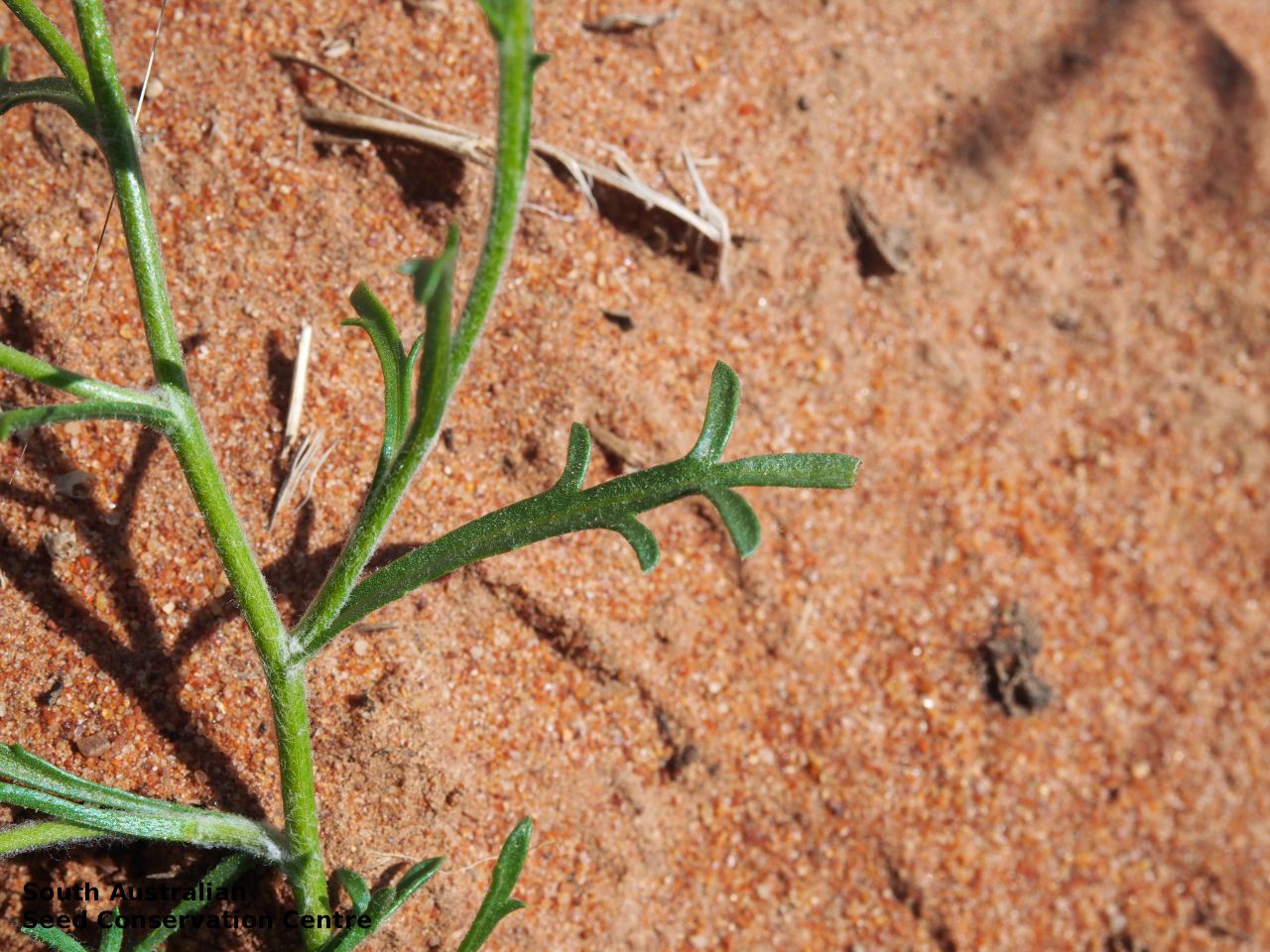
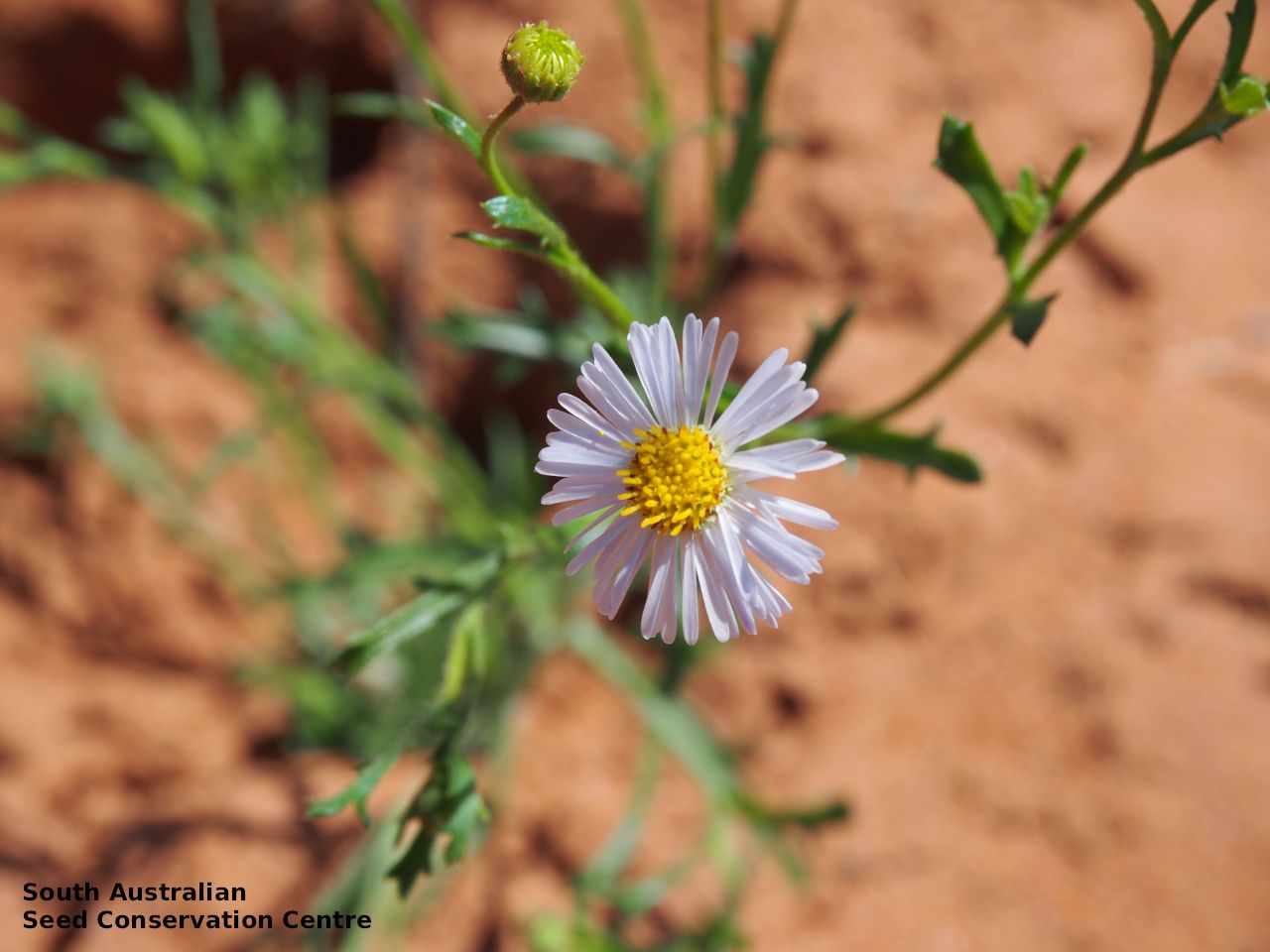
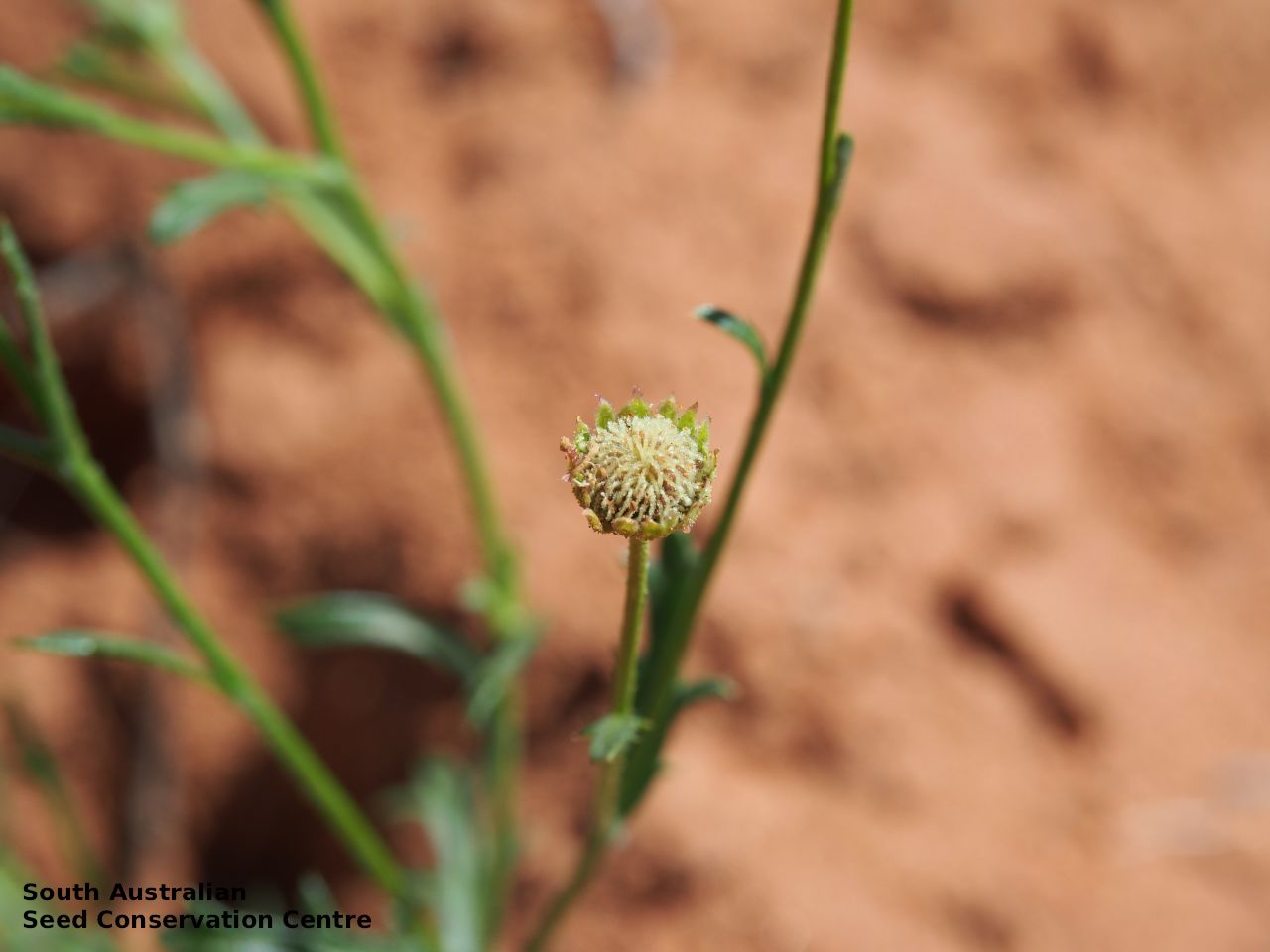
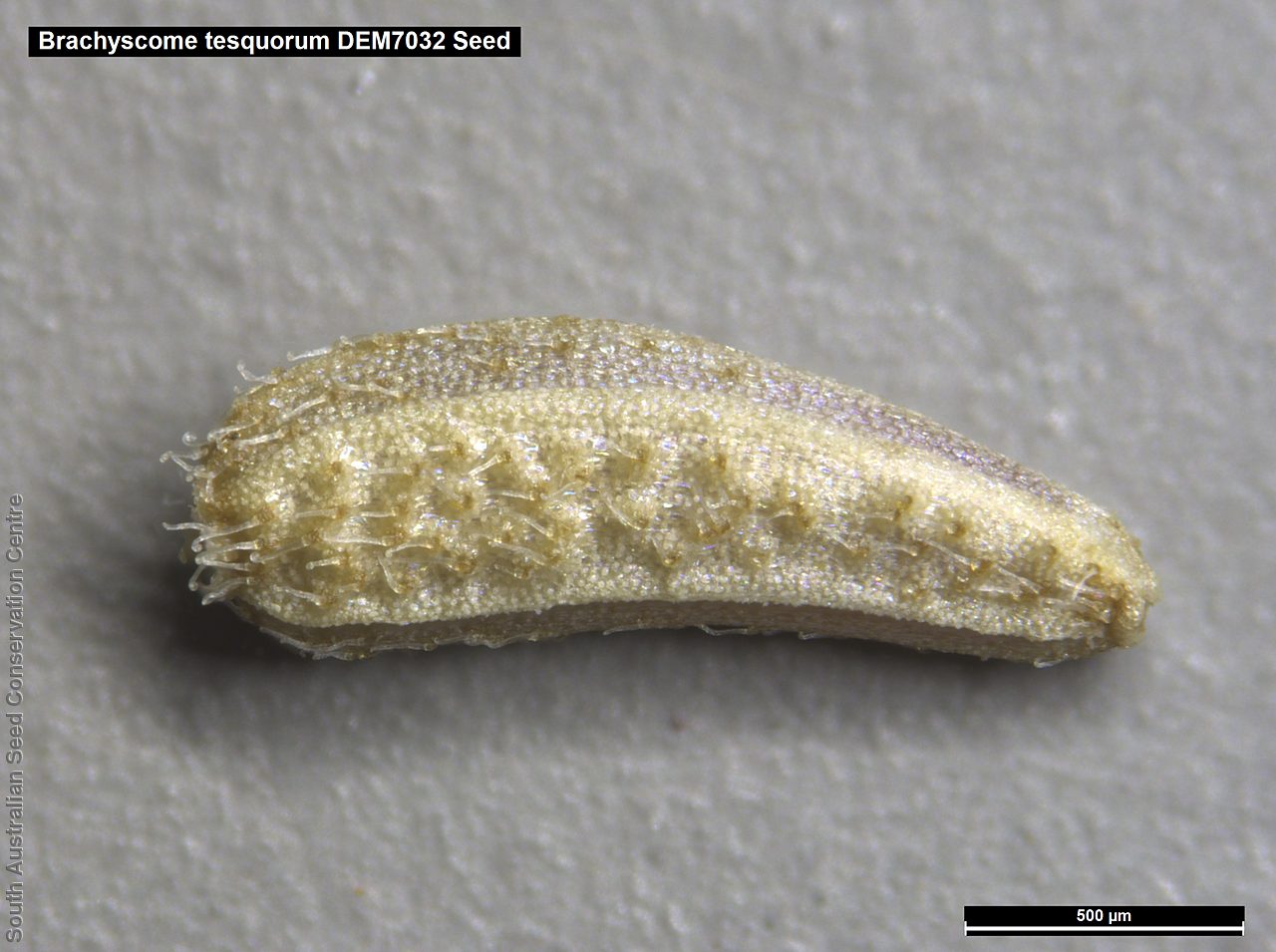
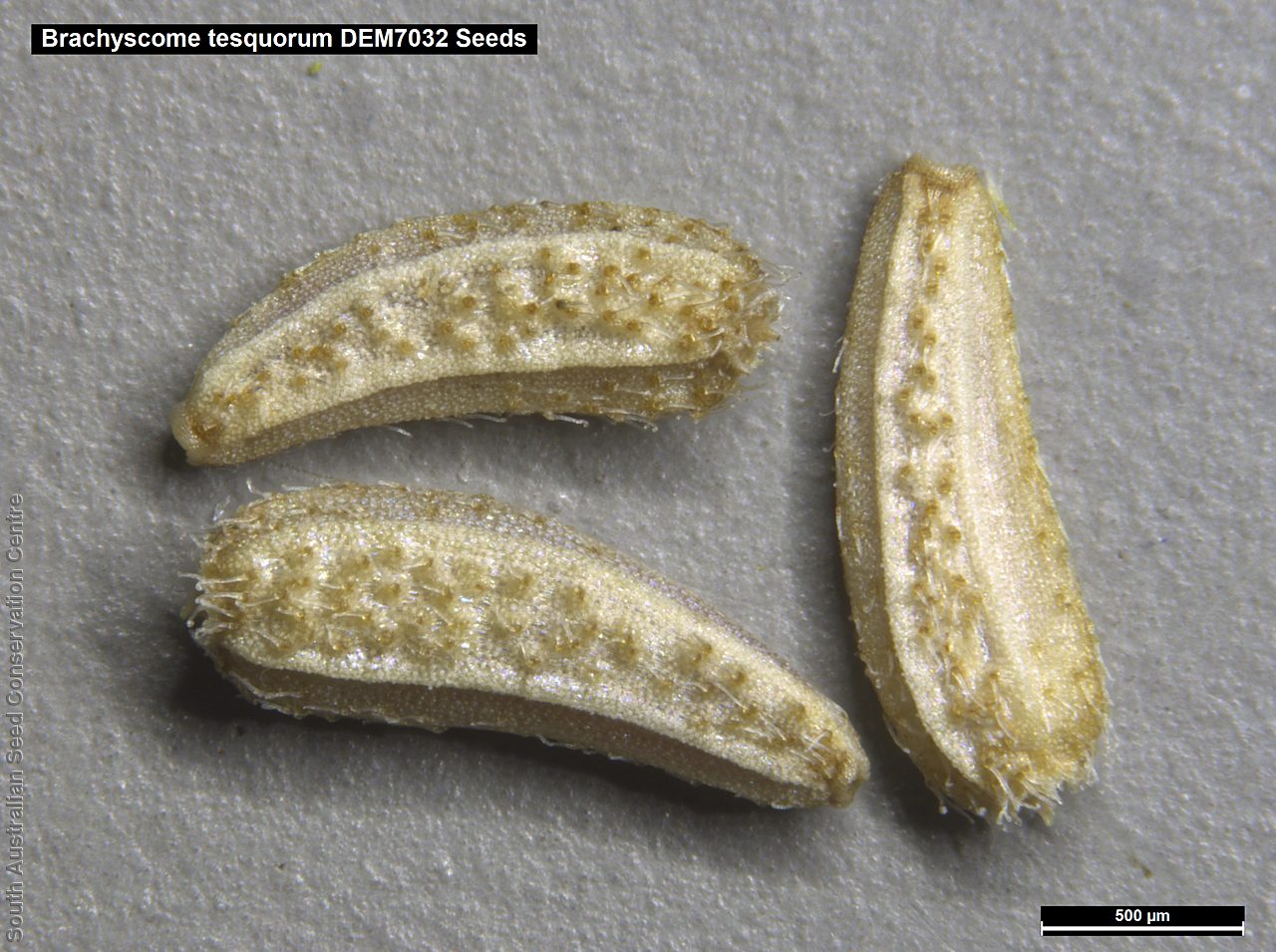


Prior names
Brachycome tesquorum
Etymology
Brachyscome from the Greek 'brachys' meaning short and 'kome' meaning hair, referring to the tuft of short bristles or hairs of the pappus. Tesquorum means of waste ground or desert, referring to its habitat in the centre of Australia.
Distribution and status
Found in the north and north-west parts of South Australia, growing on rocky slopes and outcrops, sandplains, watercourses and road drains. Also found in Western Australia, Northern Territory and Queensland. Native. rare in South Australia. Rare in Western Australia and Queensland. Common in the Northern Territory.
Herbarium regions: North Western, Lake Eyre
NRM regions: Alinytjara Wilurara, South Australian Arid Lands
AVH map: SA distribution map (external link)
Plant description
Small undershrub to 45 cm high with erect hairy stems, densely branching with persistent leaf bases. Leaves all cauline, sessile, oblanceolate, acute, to 50 mm long and 5 mm wide, dentate with few distant acute fillform teeth, hairy. Inflorescence on a long stalk with white or pale-blue ray florets and yellow disc florets. Flowering between June and November. Fruits are brown daisy-heads Seed embryo type is spatulate fully developed.
Seed collection and propagation
Collect seeds between August and January. Pick heads that are maturing, drying off, with brown seeds that dislodge easily. Place the seed-heads in a tray and leave to dry for a week. Then gently rub the heads by hand to dislodge the seeds. Use a sieve to separate the unwanted material. Store the seeds with a desiccant such as dried silica beads or dry rice, in an air tight container in a cool and dry place.